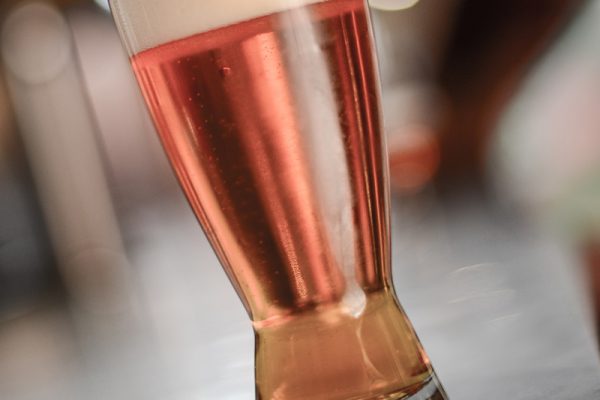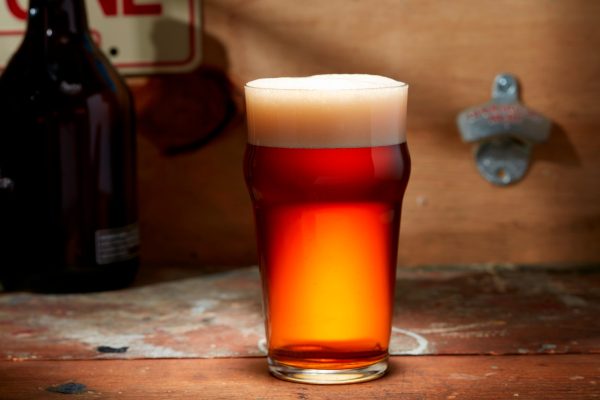
The following beer recipe is featured in the May/June 2019 issue of Zymurgy magazine. Access this issue along with the archives with Zymurgy Online!
Recipe courtesy of Jan Brücklmeier of Aurora, Ohio.
May 1st is a bank holiday in Germany (Labor Day), and May is very often a transition month from the cold winter to a warmer spring in Bavaria. The same is true for a well-brewed Maibock, or heller bock. It is a real bock, i.e. a strong beer, but it is brewed with an eye to high drinkability. With its pale color, it is not as rich and malty as its darker brothers and sisters, which are typical for fall and winter in Bavaria. With high drinkability and an alcohol content of 6.3 to 7.4% ABV, heller bock can be quite a “dangerous” beer.
The following beer recipe is featured in the May/June 2019 issue of Zymurgy magazine. Access this issue along with the archives with Zymurgy Online!
Recipe courtesy of Jan Brücklmeier of Aurora, Ohio.
May 1st is a bank holiday in Germany (Labor Day), and May is very often a transition month from the cold winter to a warmer spring in Bavaria. The same is true for a well-brewed Maibock, or heller bock. It is a real bock, i.e. a strong beer, but it is brewed with an eye to high drinkability. With its pale color, it is not as rich and malty as its darker brothers and sisters, which are typical for fall and winter in Bavaria. With high drinkability and an alcohol content of 6.3 to 7.4% ABV, heller bock can be quite a “dangerous” beer.
Ingredients:
- MALTS
- 8 lb. (3.6 kg) Pilsner malt
- 3.75 lb. (1.7 kg) Vienna malt
- 1.1 lb. (500 g) acidulated malt
- 14 oz. (397 g) pale caramel malt (25 EBC)
- HOPS
- 0.7 oz. (20 g) Magnum, 12.5% a.a. @ 60 min
- 0.4 oz. (11 g) Hallertauer Mittelfrüh, 4.5% a.a. @ 15 min
- 0.7 oz. (20 g) Hallertauer Mittelfrüh, 4.5% a.a. @ 5 min
- YEAST
- 300 billion cells Alcohol tolerant lager yeast like White Labs WLP833 German Bock Lager Yeast or Wyeast 2487 Hella Bock Lager
Specifications:
Yield: 5.28 US gal. (20 L)
Original Gravity: 1.068 (16.5°P)
Final Gravity: 1.012 (3°P)
ABV: 7.4% by volume
IBU: 35 IBU (Tinseth)
SRM: 7.5 SRM (15 EBC)
Directions:
Heat 21.5 qt. (20.3 L) water to 104°F (40°C) and mash in the 13.8 lb. (6.3 kg) grist. This should lower the temperature to about 100°F (38°C). Let the mash rest for 30 minutes. Take about one-third of the mash as the first decoction. Use Dickmaische, which is the part with grist that settles at the bottom of the mash tun, heat it to 151°F (66°C), and rest for 20 minutes. After the rest, heat the decoction further to 162°F (72°C) for a 15-minute rest before you bring the decoction to a boil. Don’t forget to stir while heating. After a 15-minute boil, reunite the decoction with the remaining mash. Again, don’t forget to stir to avoid local overheating and enzyme destruction. The mash should now have a temperature of around 151°F (66°C). Rest for 10 minutes. Again, remove one-third of the mash from the mash tun. This time use Dünnmaische, the part with less grist, which will collect in the upper portion of the mash tun. Heat the decoction to 162°F (72°C) while stirring. Rest for 10 minutes before you bring the decoction to a boil. Boil for 15 minutes and reunite the mash in the mash tun while stirring. The mash should now reach around 162°F (72°C). Rest for 15 minutes and check saccharification with an iodine test. Heat the mash to 172°F (78°C) and hold a mash-out rest for about 10 minutes before you start lautering. Sparge with 172°F (78°C) water until the wort is diluted to a gravity of around 1.057 (14°P) in the kettle. Heat up for a 90-minute boil. Add 0.7 oz. (20 g) Magnum 30 minutes after the wort starts to boil. Add 0.4 oz. (10 g) Hallertauer Mittelfrüh 75 minutes into the boil. Add the last 0.7 oz. (20 g) Hallertauer Mittelfrüh 5 minutes before you finish the 90-minutes boil. Your wort should now have a gravity of 1.068 (16.5°P). Cool wort to about 48°F (9°C) and pitch the yeast. Let the temperature rise to about 50°F (10°C) and wait until the beer reaches a gravity of about 1.018 (4.5°P), before you transfer it to a secondary fermenter. Let the beer ferment under a top pressure of 16 psi (1.1 bar) for another 2 weeks before you cool it to about 32°F (0°C). Allow the beer to mature for at least another 5 weeks. If you bottle condition your brew, pitch at 48°F (9°C) and let the temperature rise to 50°F (10°C). Wait until the gravity doesn’t change for at least 3 consecutive days before you transfer the beer to your filling bucket. Add sugar for a carbonation of 4.5 g/L (if you ferment at 50°F/10°C, this should be 4.5 g sugar per liter).
“Earl’sches” Variation
This beer can be also brewed using Earl’s decoction process.
Split the grist into a 9.5 lb. (4.3 kg) portion and a 4.3 lb. (2 kg) portion. Prepare two portions of water with 10.4 qt. (9.8 L) each.
Stir the 9.5 lb. (4.3 kg) grist into one of the 10.4 qt. (9.8 L) portions of water. Heat this mash to 149°F (65°C) and rest for 30 minutes. Raise temperature to 162°F (72°C) and rest for 30 minutes. Check for saccharification with an iodine test. When the mash is fully converted, bring it to a boil and boil for 20 minutes.
Add the second portion of the water to the mash. This should reduce the mash temperature to below 149°F (65°C). If not, add more cold water. Stir in the remaining 4.3 lb. (2 kg) grist. Heat the entire mash to 149°F (65°C) and rest for 30 minutes. After the rest, raise the mash temperature to 162°F (72°C) and rest for 30 minutes. When an iodine test shows full saccharification of the mash, heat to 172°F (78°C) and mash out. Begin lautering and follow the remaining instructions above.





Share Post